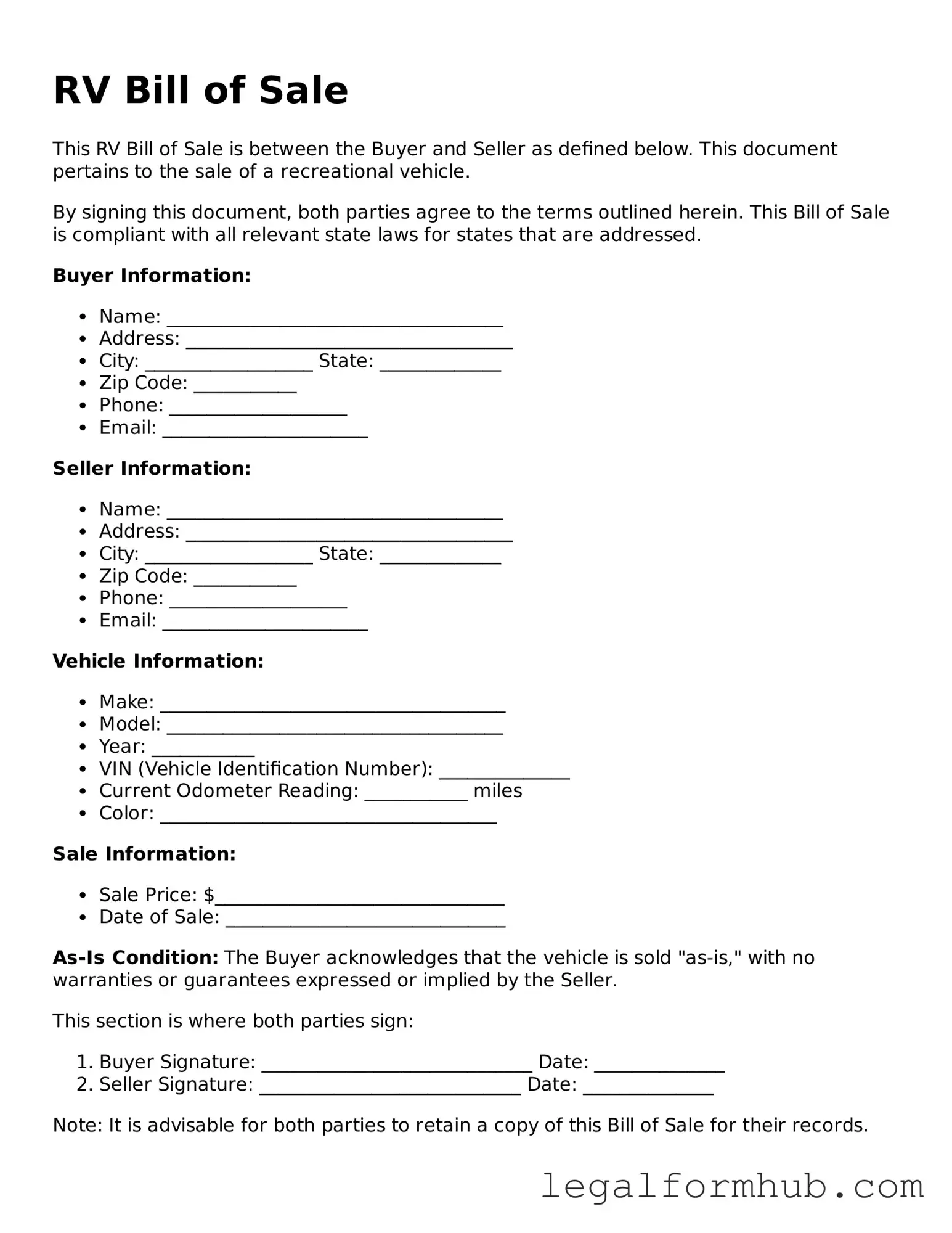RV Bill of Sale - Tailored for Each State
Instructions on Writing RV Bill of Sale
Filling out the RV Bill of Sale form is an important step in the process of transferring ownership of a recreational vehicle. Once completed, this document will serve as proof of the transaction between the buyer and seller, ensuring that both parties have a clear understanding of the terms agreed upon. Follow these steps to fill out the form accurately.
- Obtain the form: Download or print the RV Bill of Sale form from a reliable source.
- Enter the date: Write the date of the sale at the top of the form.
- Provide seller information: Fill in the seller's full name, address, and contact information.
- Provide buyer information: Enter the buyer's full name, address, and contact information.
- Describe the RV: Include details such as the make, model, year, vehicle identification number (VIN), and any other relevant specifications.
- Specify the sale price: Clearly state the amount for which the RV is being sold.
- Indicate payment method: Note how the payment will be made (e.g., cash, check, bank transfer).
- Include any warranties or conditions: If applicable, describe any warranties provided by the seller or conditions of the sale.
- Signatures: Both the seller and buyer must sign and date the form to validate the transaction.
Once the form is filled out and signed, both parties should retain a copy for their records. This document will be essential for any future reference regarding the ownership and sale of the RV.
